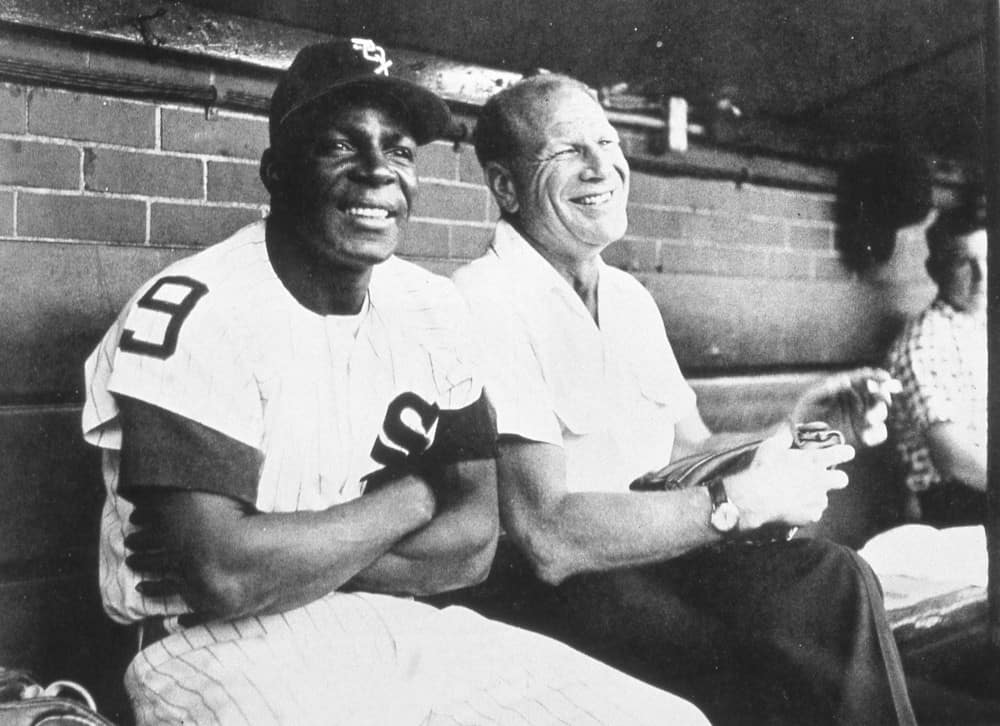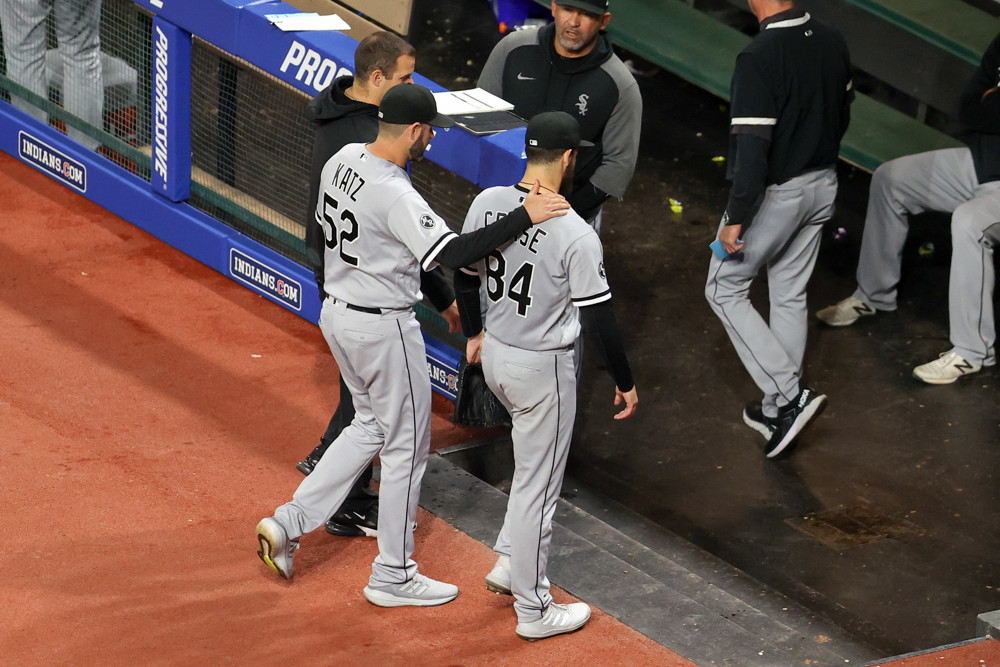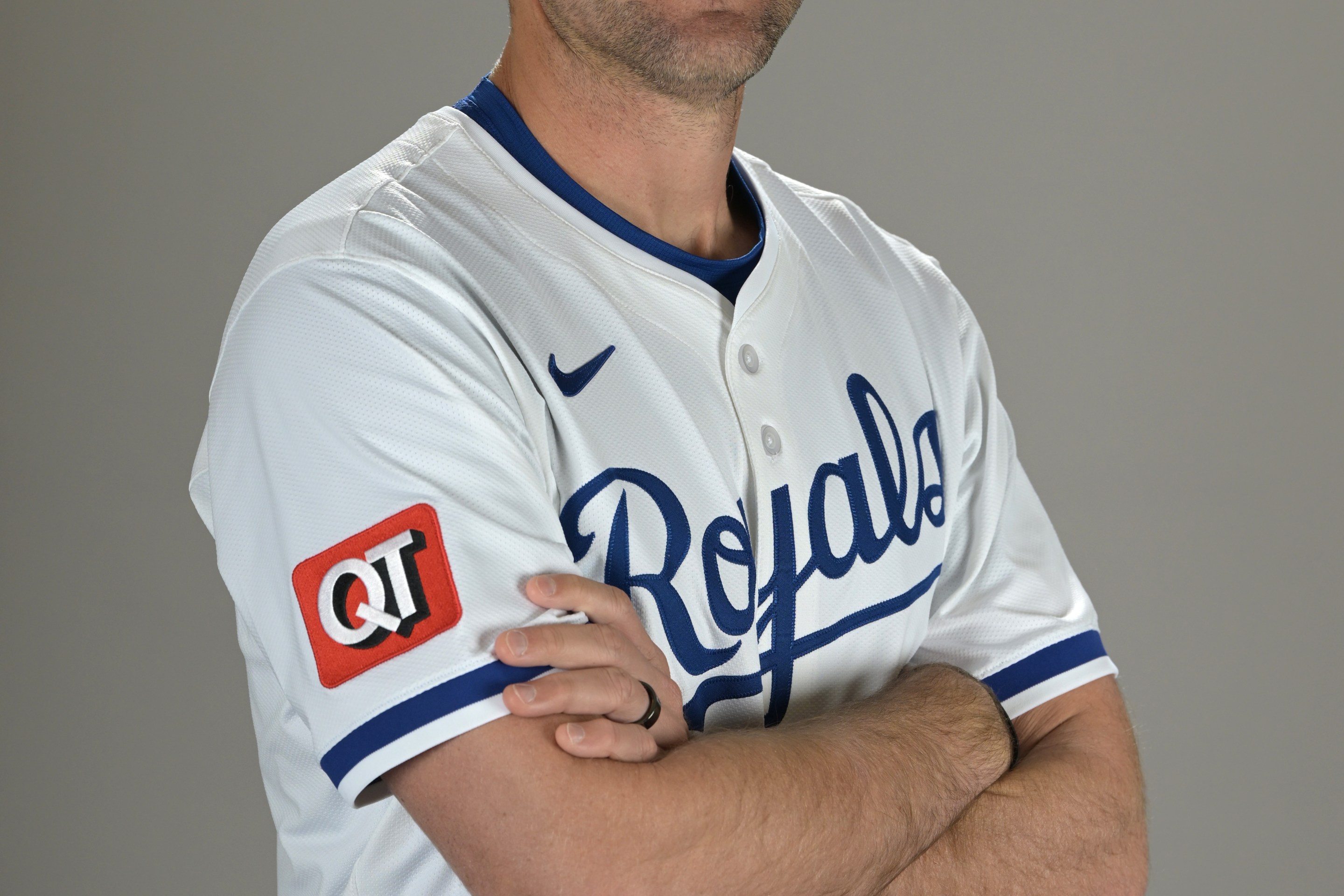Even upon returning to Low-A Kannapolis this season, hulking White Sox prospect George Wolkow is still the second-youngest member of the Cannon Ballers, barely a month older than fellow outfielder Abraham Nuñez.
Still, the 19-year-old wields a precocious ability to sum up the essential challenge of his development into a viable major league slugger.
"Long levers, and I move really fast and I swing really hard," said Wolkow in a phone interview this week. "If I'm swinging at max effort, it's hard to adjust from a 95 mph fastball to an 88 mph changeup or an 80 mph curveball. With the change of speed for me, it's about having a more controlled, repeatable swing, pitch-to-pitch. For me, what really helps with that all just comes down to approach."
Wolkow has an indefatigable appetite for conditioning, such that he won an organizational award for it among all Sox minor leaguers that was presented to him in spring training. Pressed for the details of his exhaustive offseason routine, and he'll concede that stuff like his work to build core strength, improve his quick twitch, or specifically focus on being able to stabilize his entire 6-foot-7-inch frame on his back leg, can translate to his swing.
Mechanically, he believes his swing is shorter, more compact and more consistent than it was last year, his first full season as a professional out of nearby Downers Grove North High School. Wolkow confirmed that he had intentionally reset the placement of his hands closer to where he starts his motion, shortening the length of his naturally long swing path, but referred to it as a "micro-adjustment" that comes with the territory of playing everyday and refining his swing, rather than transformative.
But with Wolkow, good luck getting him to frame his path to Chicago as anything but a test of his mind, his will, his commitment to a long-term plan to climb his way to success in the majors.
"There's a mechanical piece to it, but I think a lot of it for me is a mix of approach and honestly just being more professional," Wolkow said. "Last year a lot of times I found if I started the game off 1-for-1, I'd get in the box and try to do more damage. That's where a lot of the chase came in as well. If you're starting the game off 1-for-1, getting in the box with a runner on first base, one out, it's understanding that the pitcher is going to want me to hit into double play, throw soft stuff low and try to get me to chase, roll over. I was almost-- I don't want to say speeding up, but being a little immature."
Wolkow hit .241/.342/.428 with 11 home runs in 76 games last year at Kannapolis. The performance was good for a 123 wRC+, meaning that he was 23 percent better than the average hitter in a league where all the opposing pitchers were older than him. His massive frame produced exit velocities that would be above-average for the majors, and Carolina League defenses had as little success corralling his contact as you might expect.
But he also struck out 40.6 percent of the time last season, with a contact rate so low (53 percent) that it lacked for parallels among any successful full-time major leaguers. For most league scouts, this solidified that Wolkow simply lacked the hit tool to ever make his top-of-the-scale power relevant in games. For Wolkow, it just solidified what his offseason had to look like.
"Last year, I was really good at hitting the fastball and I would hit the breaking ball occasionally," Wolkow said. "It's really trying to create an uncomfortable training atmosphere in the offseason. Not just getting in the cage and hitting eight out of 10 balls clean and feeling really good about myself when I'm going home. But days when you really crank the wheels up a little bit and are struggling and are getting blown up by some nasty sliders, or velo with ride on some of the foam balls off of the machine. With the contact piece of it, being uncomfortable is what makes the game feel easier and what makes the natural instinct better."
Wolkow's leaning only calcified upon arrival at spring training, where his meetings with director of hitting Ryan Fuller focused on his need to improve his contact rate against sliders. Ironically, given all his struggles with them, Wolkow always felt he recognized spin fairly well, but simply failed to adjust in time. He strives to be loose and "tension free" at the plate, so that his swing is adjustable mid-flight. But more than anything, Wolkow wanted to be exposed to breaking balls relentlessly, until reacting to them became second nature.
"When you get in the cage and someone's flipping it to you and they're throwing it middle-middle every time, you get in that habit of swinging, swinging, swinging because you know the ball is going to be there every time," Wolkow said. "I put myself in atmosphere where I don't know where the ball is going to be thrown. When I had access to the Trajekt in Arizona, that's just an unbelievable technology because you're stepping in the box and it's game-like. You don't know where the ball is going to come out of that machine."
Wolkow has continued the practice at Kannapolis with the iPitch machine the Cannon Ballers have at their home stadium, and even asks coaches to do all they can to alter the location and velocity on the pitching machines they bring on the road. Worried that just practicing swinging at meatballs "grooves your swing out," Wolkow eyed a Tim Elko-like route to improvement, where not swinging at bad pitches would also improve his contact rate against good ones.
"When you're in that mindset of reacting and making the right decision, you're not thinking about where your hands are, if your foot got down," Wolkow said. "That's the mindset you have to carry into the game. If you're treating the game like you're hitting off the machine and you're thinking about your mechanics and just hoping the ball is going to be middle-middle, you're going to be swinging at a changeup in the dirt and walking back to the dugout."
There's just one caveat: Wolkow started the 2025 season horribly.
He hit .132/.235/.191 in April. Wolkow also stole nine bases that month, which he absolutely loved. But for someone who aspires to be one of the best hitters in the major leagues, who never shied away from the Aaron Judge comps that simply his massive size tends to draw, here Wolkow was repeating Low-A and staring up at an OPS under .500 every time he dug into the box.
"It's understanding that my road and my process is different from other people's and you just have to trust it," Wolkow said. "I wasn't going into the year expecting to bat .200 through my first 100-something ABs. I wasn't expecting to fail. But that's something you've got to prepare for. Not everything is going to go my way, and on my road to Chicago, it's not all going to be happy and easy."
The feedback that Wolkow received from White Sox coaches, or even a certain beat reporter texting him, testing the waters if he'd want to interview about it despite his surface-level numbers being poor, is that his contact rates had shown real growth. Through April, Wolkow was chasing out of the zone in two-strike situations at a 33-percent clip, down 4 percentage points from the previous season. His in-zone whiff rate was down to below 22 percent, where it had been 34 percent in 2024. In all, he was within a hair of a 70-percent contact rate, which is where power hitters like Judge, Rafael Devers and Bryce Harper reside against big league pitching.
So this week, when Wolkow finally started to produce -- homers in three straight games, extra-base hits in five straight -- it felt less like the first sign of life, and more like the latest in a series of sparks, finally igniting a blaze. He's hitting all of .203/.288/.341 for the season, and is cranky about striking out more of recent, but also doesn't have any doubt about what direction it's all headed.
"It almost makes me trust my process more," Wolkow said. "I wasn't going out there swinging for the fences trying to hit more home runs. I'm doing the same thing I was doing the week before. Just hearing those things just helps me focus in and know that it is a process and continue to trust that, put the work in, and know that good things are happening even if the numbers aren't quite there right now."






